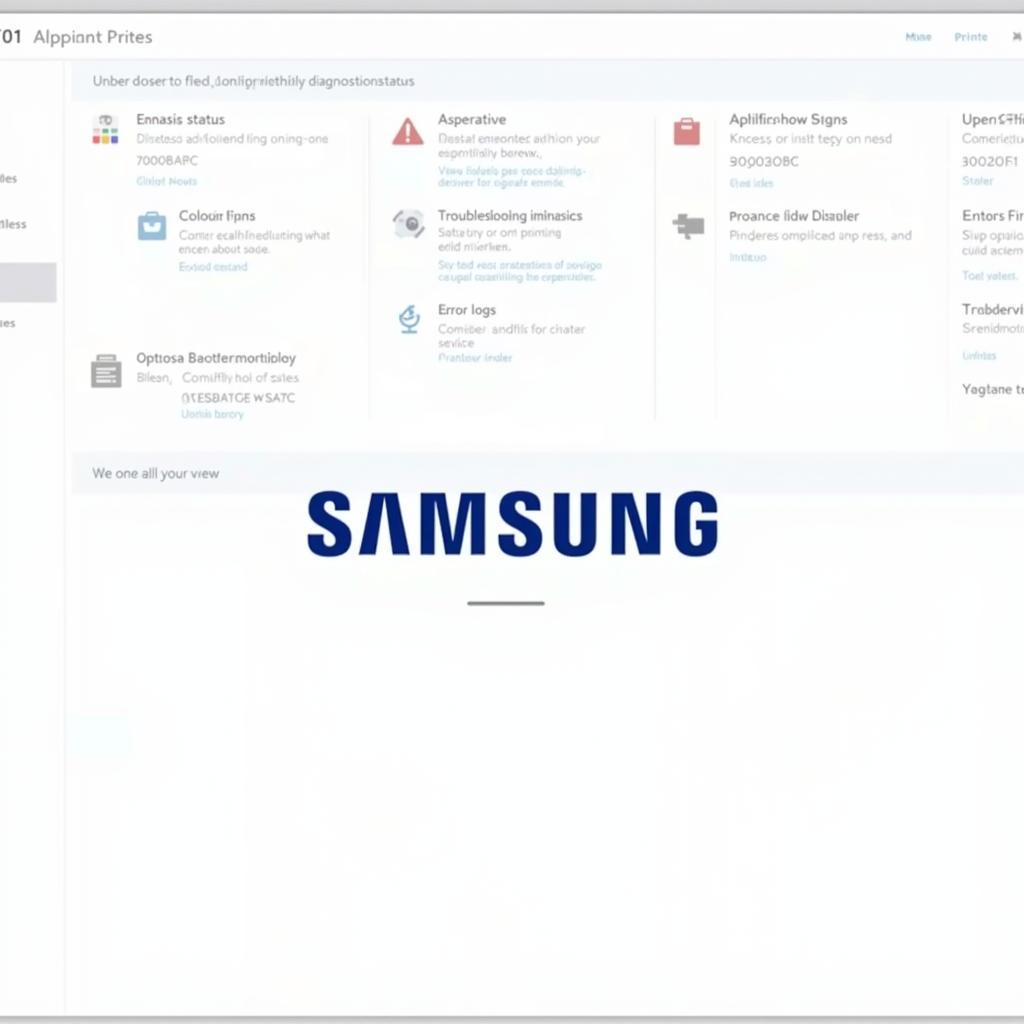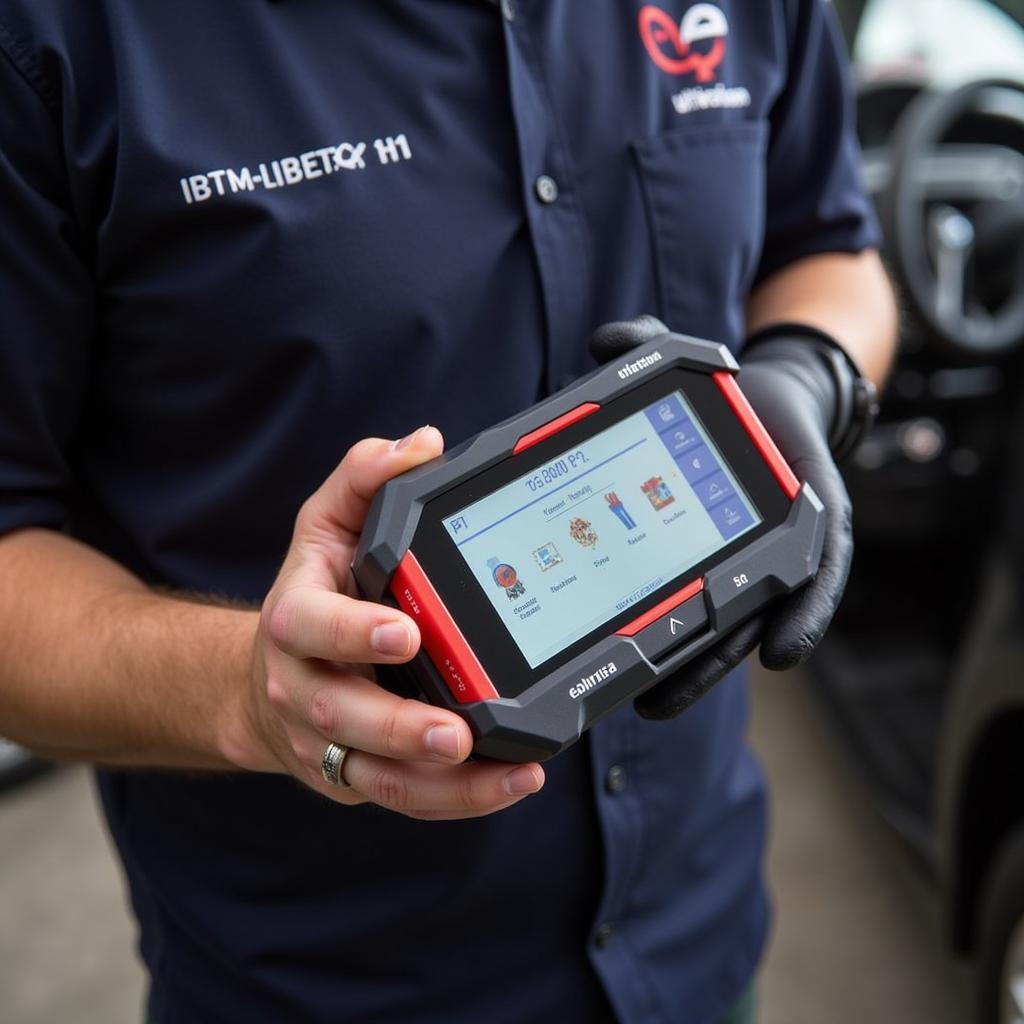Mobility Scooter Diagnostic Tools have become essential for anyone who owns, repairs, or services these invaluable vehicles. These tools provide the power to diagnose and potentially fix issues, saving time, money, and frustration. Whether you’re a seasoned technician or a scooter owner wanting to troubleshoot basic problems, this comprehensive guide will equip you with the knowledge to choose and effectively use a mobility scooter diagnostic tool.
What are Mobility Scooter Diagnostic Tools and Why Are They Important?
Imagine this: you’re about to head out, but your trusty mobility scooter refuses to budge. The battery seems fine, and everything looks in order. This is where a mobility scooter diagnostic tool comes into play. These tools act like a window into your scooter’s electronic system, revealing error codes and data that pinpoint the source of the problem.
But their importance goes beyond just identifying issues. Diagnostic tools can:
- Save you money: By quickly identifying problems, you can avoid unnecessary trips to repair shops and potentially catch minor issues before they escalate into costly repairs.
- Reduce downtime: Get back on the move faster. Diagnosing the problem quickly translates to quicker repairs and less time your scooter is out of commission.
- Empower preventative maintenance: Regularly scanning your scooter with a diagnostic tool can help identify potential issues before they become major headaches. This proactive approach can extend the life of your scooter.
Types of Mobility Scooter Diagnostic Tools
Choosing the right diagnostic tool depends on your needs and technical expertise. Here’s a breakdown of the common types:
1. Handheld Code Readers
These portable devices are ideal for scooter owners and basic troubleshooting. They plug into your scooter’s diagnostic port and display error codes that can guide you toward the problem area.
Pros:
- Affordable
- Easy to use
- Compact and portable
Cons:
- Limited functionality (mainly reading and clearing codes)
- Might not be compatible with all scooter models
2. Advanced Diagnostic Software
 Software interface for mobility scooter diagnostics
Software interface for mobility scooter diagnostics
For professional technicians and repair shops, advanced diagnostic software offers a comprehensive solution. These software programs, often used with a laptop and a connecting cable, provide in-depth data, including:
- Real-time sensor readings
- Battery health analysis
- Actuator testing
- Programming capabilities
Pros:
- Detailed diagnostics and analysis
- Wide range of functions
- Regular software updates
Cons:
- More expensive than handheld readers
- Requires technical knowledge to interpret data
- May require specific cables or adapters for different scooter models
Choosing the Right Diagnostic Tool for You
Navigating the world of diagnostic tools can feel overwhelming. When making a decision, consider the following factors:
- Your technical skill: Are you comfortable with basic troubleshooting, or do you need a tool for in-depth diagnostics?
- Your budget: Handheld code readers are more budget-friendly, while advanced software comes at a higher price point.
- Scooter compatibility: Ensure the tool you choose is compatible with your scooter’s make and model.
- Features: Prioritize the features most important to you, such as code reading, live data streaming, or battery analysis.
How to Use a Mobility Scooter Diagnostic Tool
While specific instructions vary depending on the tool and scooter model, here’s a general guide:
- Locate the diagnostic port: This is usually found under the seat or within the scooter’s battery compartment.
- Connect the tool: Plug in the handheld reader or connect the laptop with the appropriate cable.
- Turn on the scooter: This will allow the diagnostic tool to communicate with the scooter’s system.
- Read the error codes: The tool will display any stored error codes. Note down the codes for further reference.
- Interpret the codes: Refer to your scooter’s manual or an online database to understand what each code means.
- Clear the codes: After addressing the issue, use the tool to clear the error codes.
- Test the scooter: Ensure the problem is resolved by taking the scooter for a test run.
Important Note: If you’re unsure about any step or encounter persistent issues, it’s always best to consult a qualified mobility scooter technician.
Common Mobility Scooter Problems a Diagnostic Tool Can Help Identify
A diagnostic tool can be your best friend when troubleshooting various scooter issues, such as:
- Battery problems: Identify issues with battery charging, capacity, and overall health.
- Motor controller errors: Detect problems with the motor controller, which regulates the scooter’s speed and power.
- Throttle or joystick malfunctions: Pinpoint issues with the scooter’s control mechanisms.
- Brake system faults: Diagnose problems with the scooter’s braking system, ensuring safety.
- Wiring harness issues: Identify any faults within the scooter’s wiring harness, which can cause a range of electrical problems.
Beyond Diagnostics: The Future of Mobility Scooter Technology
As technology advances, we can expect even more sophisticated diagnostic tools and features, including:
- Predictive maintenance: Tools that analyze data trends to predict potential issues before they occur.
- Wireless connectivity: Diagnostic tools that connect wirelessly to smartphones or tablets for easier data access and analysis.
- Remote diagnostics: The ability for technicians to remotely diagnose and troubleshoot scooter issues from a distance.
“Investing in a quality diagnostic tool is an investment in your scooter’s longevity and your peace of mind,” says John Smith, a senior mobility equipment technician with 15 years of experience. “These tools empower users to take control of their scooter’s maintenance and ensure a smoother, more reliable riding experience.”
Conclusion
Whether you’re a scooter owner looking to troubleshoot basic issues or a professional technician needing in-depth diagnostic capabilities, a mobility scooter diagnostic tool is an invaluable asset. By understanding the different types of tools available, choosing the right one for your needs, and learning how to use it effectively, you can keep your scooter running smoothly for years to come.
For expert advice on choosing the perfect diagnostic tool for your needs, contact the team at ScanToolUS at +1 (641) 206-8880 or visit our office at 1615 S Laramie Ave, Cicero, IL 60804, USA. We’re here to help you keep moving!
FAQs about Mobility Scooter Diagnostic Tools:
- Can I use any diagnostic tool with my mobility scooter?
No, compatibility is crucial. Ensure the tool you choose is designed for your scooter’s make and model. - Do I need technical skills to use a handheld code reader?
Handheld readers are designed for basic troubleshooting and are relatively user-friendly. - What should I do if I can’t find the diagnostic port on my scooter?
Consult your scooter’s manual or contact the manufacturer for assistance. - Can a diagnostic tool fix problems with my scooter?
While diagnostic tools primarily identify issues, knowing the source of the problem can guide repairs and prevent further damage. - How often should I use a diagnostic tool on my scooter?
It’s recommended to perform a diagnostic scan at least every six months or whenever you experience unusual performance issues.



